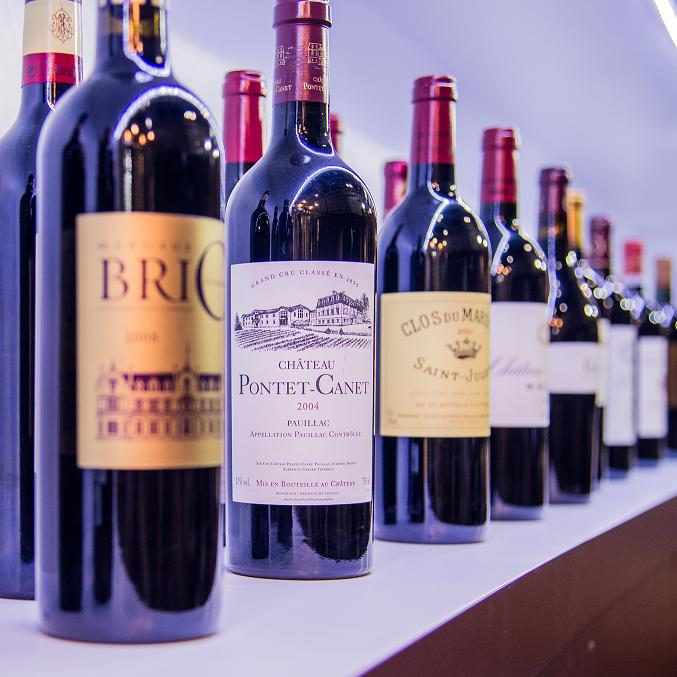Types of Red Wines & White Wines

Types of Red Wines & White Wines
The type of grape used in the making of wines determines its varietals. Below is a helpful guide to the classic grape varieties:
BARBAROSSA
Barbarossa is a type of red wine found mostly in
BARBERA
Mostly grown in warm coastal regions like Piedmont and northern
CABERNET FRANC
Cabernet Franc is considered the parent grape of Cabernet Sauvignon. This grape is usually seen in places featuring cool and damp climatic conditions. The Loire region of southwest
CABERNET SAUVIGNON
Cabernet Sauvignon belongs to the cohort of the “noblest” grape alongside Merlot, Cabernet Franc. Cabernet Sauvignon grapes can be planted anywhere. They are blended with other varieties to produce the famous French Bordeaux region wines. In the
CARMENÈRE
Originally found in the Medoc region of
CHARDONNAY
Chardonnay is popular for its fruity flavors and clean structure. Its origin is in the
CHENIN BLANC
Chenin Blanc, Steen or Pineau de
FREISA
Freisa is a grape varietal that grows in the Piedrmont region of
GAMAY
Gamay may pertain to Gamay Noir, Gamay Beaujolais and Napa Gamay. Some of these varieties were thought to be the true Pinot Noir of Burgundy up until they were finally determined to be clones of grapes.
GAMAY
Gamay Beaujolias is a
GARNACHA
Alternate name for the Grenache grape in
GEWÜRZTRAMINER
Gewürztraminer is an excellent wine grape variety that is also referred to as Traminer Rot. This grape is renowned for its strong floral aroma and lychee flavor. It is comparable to the Johannesburg Riesling. Gewurz can also be made into “botrytized” late harvest dessert wines. Gewurz fairs remarkable well in cooler coastal areas of
GRENACHE
Regarded to be synonymous to
(JOHANNISBERG) RIESLING
Also known as White Riesling in
MALBEC
Malbec has its origins in the
MERLOT
Originally grown in the
NEBBIOLO
The grape varietal that can be accounted for the excellent wines of Piedmont region
PETITE SIRAH
Petite Sirah is a genetic cross between Syrah and Peloursin. It produces wines of dark red, strong tannic character. Laced with savory blackberry fruit flavor. It is often used as backbone for
PINOT NOIR
The premier grape of the Burgundy region of
PINOTAGE
This grape has been widely grown and successful in
PINOT GRIGIO
Synonym name of the Pinot Gris where grown in
PINOT GRIS
Mutant clone of Pinot Noir. Have several synonym names in
RIESLING
Also known as the Weisser Riesling. Premier White wine grape of
SANGIOVESE
The grape popularly grown in
SAUVIGNON BLANC
Staple white-wine grown in
SÉMILLON
A golden skinned grape that is often grown in the
Grape variety that once have been thought to have originated in
SYRAH
Juicy and powerful grape associated with the Rhone valley region of
TEMPRANILLO
Fine wine grape used in best quality red wines of
TRAMINER
Still grown in France, where it is better known as Savagnin Blanc, and in California but almost everywhere else has been largely replaced by its much more intense and aromatic offspring Gewürztraminer clonal variety. The subject name is still used in
TREBBIANO
Another name for Ugni Blanc grape. Other mutations include Procanico is
VIOGNIER
Originally planted in the Rhone Valley of France, Viognier features spicy and full flavors reminiscent of the
ZINFANDEL
Formerly known as Black St. Peter in the early 19th century California lore, Zinfandel is a popular blush wine. Oldest Zin vines are located in Dry Creak and Amador regions. It is renowned for its fruit-forward, berry-like aroma and prickly taste. The origin of Zinfandel is still a subject of great debate. It is though to be associated with the Vranac variety cepage grown in Montenegro; a mutated version of Mali Plavac. The origin of Zinfandel in California is not known, though others consider that it is a corruption of Zirefandler, a white variety grown in the Balkan region of Europe.




